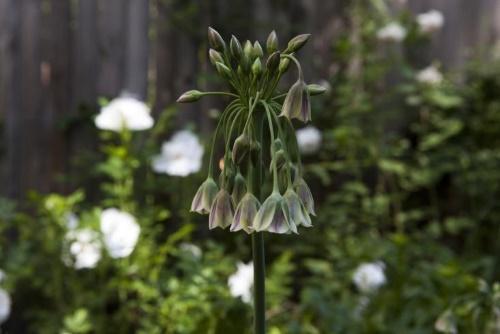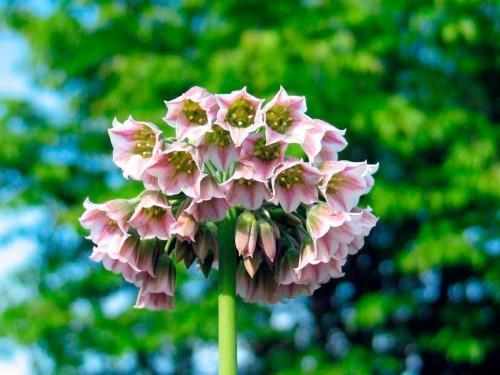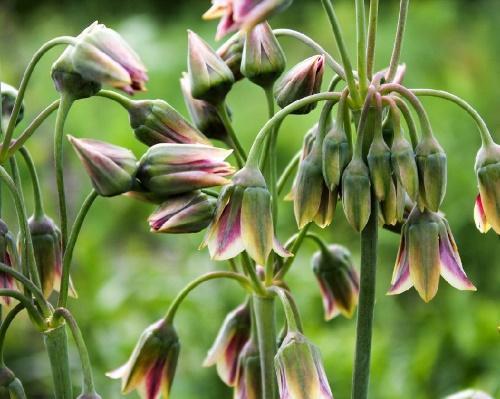Meet the mysterious allium nectaroscordum
 Allium nectaroscordum is an ambiguous plant and disputes over its belonging to one or another family are still ongoing. Some scientists argue that this is a type of onion (allium), others are convinced that nectarcordum is a separate genus from the lily family, and still others classify it as a lily family.
Allium nectaroscordum is an ambiguous plant and disputes over its belonging to one or another family are still ongoing. Some scientists argue that this is a type of onion (allium), others are convinced that nectarcordum is a separate genus from the lily family, and still others classify it as a lily family.
Only one thing can be said with certainty: nectaroscordum is a perennial, herbaceous and bulbous plant that has several varieties of its own.
Outwardly, nectaroscordum resembles an onion, and its root system is also presented in the form of a rounded bulb without rhizomes. Narrow elongated leaves grow from it. Peduncles are also high, up to 1.5 m, but can be of different lengths. At their top, small drooping bells of pale color form a loose umbrella in the shape of a ball. The inflorescences are quite large, the diameter of each bell can reach up to 1.5 cm, and there are 10 to 30 of them in the umbrella. At the end of flowering, boxes with seeds ripen in their place.
Leaves of this allium a characteristic onion-garlic smell is inherent, which is revealed in full force when touched.
Flower varieties
In some species, such forms of nectar corum are distinguished:
- Ash-loving... It grows only in the Crimean forests, consisting of oaks and ash trees. The height of the bush is from 50 to 130 cm, the deciduous rosette consists of 15 plates. Abundant flowering occurs at the end of May: the number of bells can reach up to 60 pieces. The color of the flowers is pink with a lilac-white tint.

- Dioscoris or Sicilian... Inhabits the shady forests of Asia Minor and the Mediterranean continent (Europe). Well accustomed to our open spaces. The umbrella-shaped inflorescence includes 10 to 20 pale green bells with a reddish tint or stripe.

- Three feet... It grows among the rocks in the Caucasus, blooms with white bells with purple veins.

Growing features
Nectaroscordum prefers sunny places, but it will not disappear in partial shade. The soil loves loose and fertile, it is not demanding in care, the main thing is not to flood the beds, otherwise the bulbs will begin to rot.
In regions with severe winters, it requires shelter for the winter, but, in general, has a high winter hardiness.
The flower propagates by sowing seeds or by daughter bulbs. Seeds are sown in early autumn on a seedling bed, and transplanted to a permanent place next season. Old, heavily overgrown bulbous nests are divided in the fall, after the leaves die off.